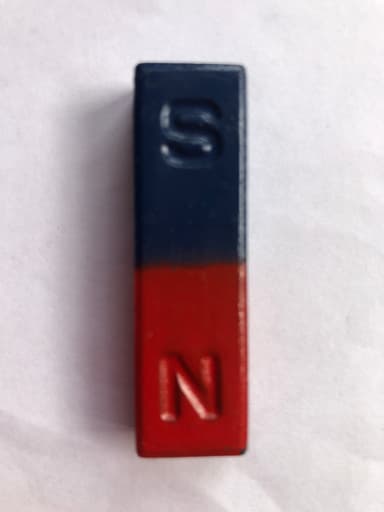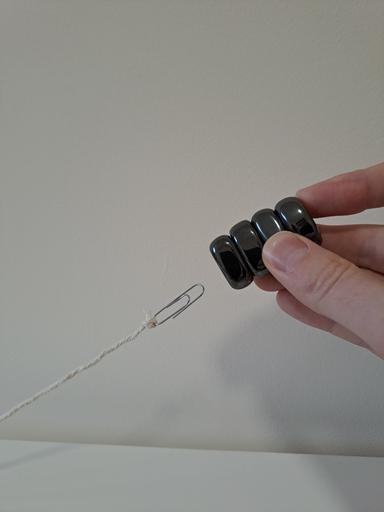Strongest magnet (non-statutory)
I can explore the strength of different magnets and find fair ways to compare them.
Strongest magnet (non-statutory)
I can explore the strength of different magnets and find fair ways to compare them.
These resources will be removed by end of Summer Term 2025.
Lesson details
Key learning points
- Magnets vary in strength, with strong magnets creating larger magnetic forces
- Magnetic forces can act at a distance, so magnets do not need to be touching to exert a force
- Scientists ask questions and then plan how to carry out the right type of investigation to find answers
- The results of a scientific investigation can be compared to other investigations that have been carried out
Keywords
Strength - The strength of something is shown by how well it can withstand a force or pressure.
Magnetic force - Magnetic force is the force caused by a magnet.
Material - The material is the thing that objects are made from such as wood, metal or plastic.
Distance - The distance between two points is the length of space between them.
Compare - We compare things by looking at what is the same and what is different.
Common misconception
Larger magnets are always stronger than smaller magnets.
Explicit teaching as well as opportunities for children to explore different size magnets and their strengths.
To help you plan your year 3 science lesson on: Strongest magnet (non-statutory), download all teaching resources for free and adapt to suit your pupils' needs...
To help you plan your year 3 science lesson on: Strongest magnet (non-statutory), download all teaching resources for free and adapt to suit your pupils' needs.
The starter quiz will activate and check your pupils' prior knowledge, with versions available both with and without answers in PDF format.
We use learning cycles to break down learning into key concepts or ideas linked to the learning outcome. Each learning cycle features explanations with checks for understanding and practice tasks with feedback. All of this is found in our slide decks, ready for you to download and edit. The practice tasks are also available as printable worksheets and some lessons have additional materials with extra material you might need for teaching the lesson.
The assessment exit quiz will test your pupils' understanding of the key learning points.
Our video is a tool for planning, showing how other teachers might teach the lesson, offering helpful tips, modelled explanations and inspiration for your own delivery in the classroom. Plus, you can set it as homework or revision for pupils and keep their learning on track by sharing an online pupil version of this lesson.
Explore more key stage 2 science lessons from the Simple forces including magnets unit, dive into the full secondary science curriculum, or learn more about lesson planning.

Equipment
Magnets, rulers and magnetic materials. See additional materials for more guidance.
Content guidance
- Risk assessment required - equipment
- Exploration of objects
Supervision
Adult supervision required
Licence
Starter quiz
6 Questions




non-contact force
contact force

Exit quiz
6 Questions


Measure how far away a magnet could attract an iron nail.
Measure how many iron nails a magnet could hold.



